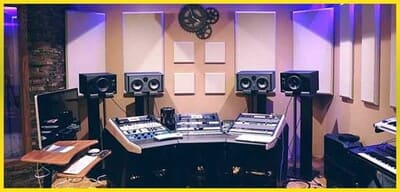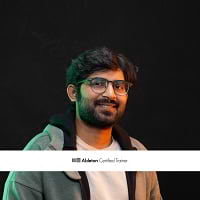Song Production and Studio Recording Tips
For any track that reaches your TV set, iPod or phone, there are many people who work hard for days and nights to make it special. Song production and recording is a ballgame that most laymen are unaware of.
From recording with an entire ensemble in a studio (in one take) and re-recording from scratch even if one note is off to now recording one word or phrase at a time. The song recording process has seen some major technological upheavals over the last couple of decades.
SIGNUP FOR A DIPLOMA IN SOUND ENGINEERING (PUNE)
Here are a few requisites that one needs to produce audio tracks efficiently. Apart from commonly known techniques, understanding other crucial aspects of recording sound is important as well.


1. Recording properly
Recording of music or any kind of audio requires an in-depth knowledge and understanding about the physics of sound, studio acoustics, equipment and consoles. At Seamedu, our students are introduced to these subjects at the very beginning of the sound engineering and music production course.
- Create a good scratch track: A pilot track or a scratch is quite a vital necessity in the process. Go the extra mile and use a drum loop instead of just a metronome. Create a rough guide for instruments to follow.
- Record the rhythm section: The rhythm section is pretty much the backbone of the track. Let’s work on the groove!
- Record the chords and harmonies: It’s time to get the chord structure and progression in place. Put down the changes, record and rhythm guitars, track the synths and pads for a proper structure.
- Record the melody: This normally is the vocals or could be any lead instrument that is in the track.
- Finishing touches: Add some vibes to the song. For instance, percussion or melody fillers, sound effects etc.
2. Editing
Current tools and software makes this process quite easy. Read on to learn some simple steps that you can follow:
- Arrangement: Analyze what is needed and what isn’t. Delete what isn’t. Like a sculpture, remove the stuff that clutters the track.
- Comparing: Compare multiple recordings of the same phrase and keep what is best.
- Noise Reduction: Remove undesirable noise from the track. For instance, annoying ambient sounds, AC sounds, chairs squeaking etc. Clean it up.
- Time Editing: Remove some bars, some beats or hits and optimize your percussion section for perfection.
- Pitch Editing: You can use the software to correct pitch. Let’s keep things in pitch!
3. Mixing
- Balancing – This is done so that no instrument sounds too loud or soft in relation to the others.
- Panning – This gives each instrument its own space in the stereo-image, much like each musician has his own space on-stage.
- Equalization – This crafts a unique space in the frequency spectrum for each instrument, so that no two sounds compete for the same band of frequencies.
- Compression – This process levels out the dynamic range of an instrument so each note is heard clearly and at a consistent level.
- Reverb – This creates a realistic space for each element, adding a sense of depth, and unifying the instruments to sound under one room/ space.
- Automation – This allows you to change settings at different points in the song, to give your mix a sense of movement.
Seamedu’s sound engineering specialization emphasizes on music mixing techniques that help students become masters at mixing and balancing the tracks they work on.
4. Mastering
Before mastering a track, re-record all your tracks to a single stereo file. Mastering a track is a complex process that should be done by trained engineers or professionals.
However, mastering a song is using tools like EQ, compression, saturation, and limiting to ensure uniformity and consistency of sound between multiple tracks on an album. Ultimately, what mastering does is that it creates a clean, comprehensive and cohesive feeling across all your audio.
All the aforementioned steps are like the legs of a table which keeps it sturdy. All should work in tandem and none can function without the other. The sound and music faculty at Seamedu helps students fine-tune this technique to produce distinguished soundtracks that sound clean and professional.
Some more tricks that sound obvious but are very crucial:
- Use the equipment, inventory, and software that you are comfortable and well-versed with. Update when required but practice and maintain.
- Label your files properly. Naming and sorting files can be a major task. Device your own system and use someone else’s but ensure that you find your files within a minute.
- Keep backing up your files. Have copies of your latest work at least at two sources.
At Seamedu, our sound engineering students use DAWs (Digital Audio Workstations) like Pro Tools, Logic Pro X, Ableton Live and Nuendo. Industry-standard equipment, like the Avid S3 + Dock, Avid HD IO, Focusrite IO, Microphone Preamps, Dynaudio 2.1 Monitors, JBL 7.1 Monitors, different kinds of Microphones, Controllers and various other Outboard gear.
Seamedu gives you holistic training to excel in the field of sound engineering.
Make a ‘sound’ career choice!
Admissions Open For –


CATEGORIES
Are you aspiring to become a proficient Sound Engineering professional?
Look no further; we are committed to nurturing the potential of young minds. Are you ready to enhance your skills?


